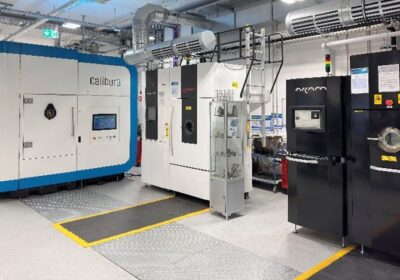New module enables more compact designs resulting in reduced chip size
X-FAB Silicon Foundries SE, the leading analog/mixed-signal and specialty foundry, has released a new isolation class within its 180nm XH018 semiconductor process. Designed to support more compact and efficient single-photon avalanche diode (SPAD) implementations, this new isolation class enables tighter functional integration, improved pixel density, and higher fill factor – resulting in smaller chip area.
SPADs are critical components in a wide range of emerging applications, including LiDAR for autonomous vehicles, 3D imaging, depth sensing in AR/VR systems, quantum communication and biomedical sensing. X-FAB already offers several SPAD devices built on its 180nm XH018 platform, with active areas ranging from 10µm to 20µm. This includes a near-infrared optimized diode for elevated photon detection probability (PDP) performance.
To enable high-resolution SPAD arrays, a compact pitch and elevated fill factor are essential. The newly released module ISOMOS1, a 25V isolation class module, allows for significantly more compact transistor isolation structures, eliminating the need for an additional mask layer and aligning perfectly with X-FAB’s other SPAD variants.
The benefits of this enhancement are evident when comparing SPAD pixel layouts. In a typical 4×3 SPAD array with 10×10µm² optical areas, the adoption of the new isolation class enables a ~25% reduction in total area and boosts fill factor by ~30% compared to the previously available isolation class. With carefully optimized pixel design, even greater gains in area efficiency and detection sensitivity are achievable.
X-FAB’s SPAD solution has been widely used in applications that require direct Time-of-Flight, such as smartphones, drones, and projectors. This new technological advancement directly benefits these applications in which high-resolution sensing with a compact footprint is essential. It enables accurate depth sensing in multiple scenarios, including industrial distance detection and robotics sensing, for example, by protecting the area around a robot and avoiding collisions when robots are working as cobots. Beyond increasing performance and integration density, the new isolation class opens up opportunities for a broader range of SPAD-based systems requiring low-noise, high-speed single-photon detection within a compact footprint.
Heming Wei, X-FAB’s Technical Marketing Manager for Optoelectronics, explains: “The introduction of a new isolation class in XH018 marks an important step forward for SPAD integration. It enables tighter layouts and better performance, while allowing for more advanced sensing systems to be developed using our proven, reliable 180 nanometer platform.”
Example design of 4×3 SPAD pixel using new compact 25 V isolation class with ISOMOS1 (right) and with previous required module ISOMOS2 (left)
Models and PDKs, including the new ISOMOS1 module, are now available, supporting efficient evaluation and development of next-generation SPAD arrays. X-FAB will be exhibiting at Sensors Converge 2025 in Santa Clara, California (June 24–26) at booth #847, showcasing its latest sensor technologies.








